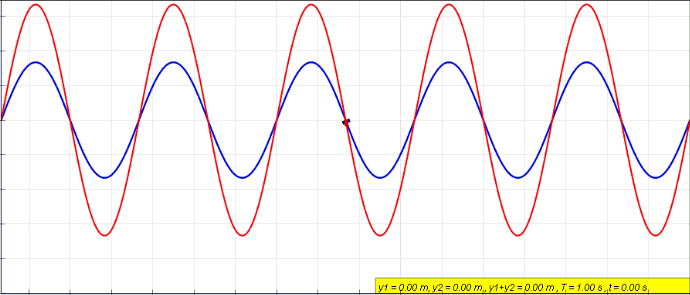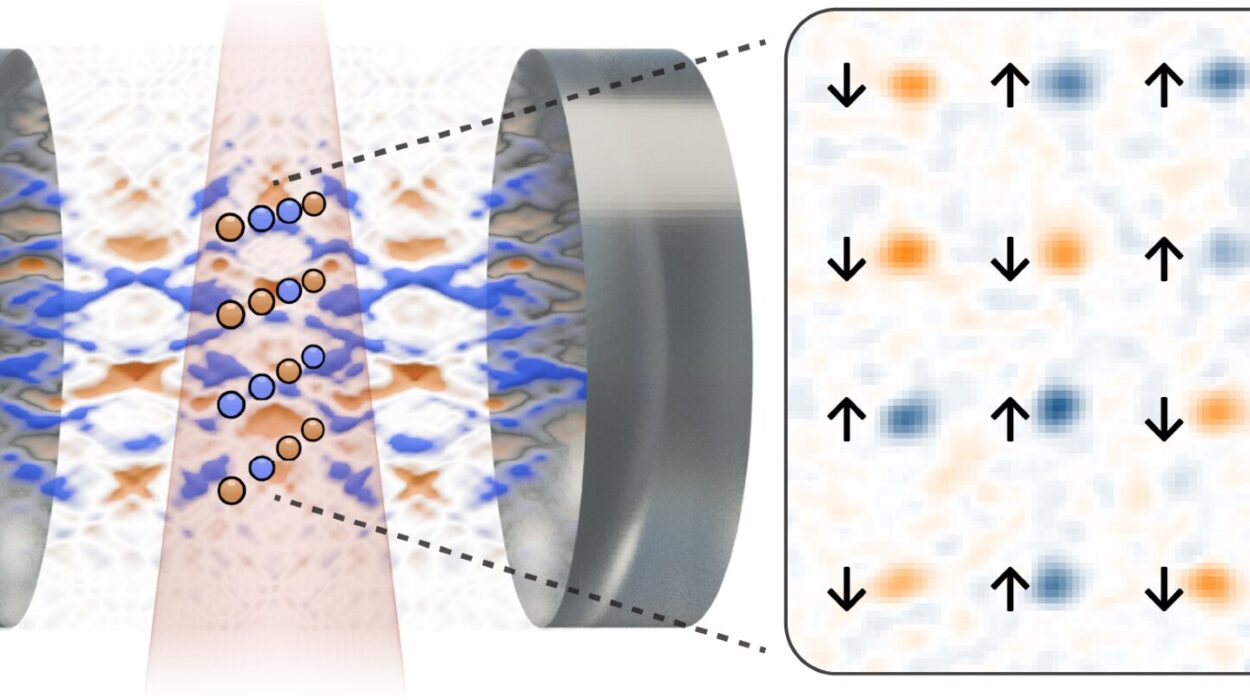Close your eyes for a moment and imagine the deep, haunting hum of a cello, the shimmering trill of a flute, or the sweet resonance of a singer holding a perfect note in a concert hall. Beneath all these beautiful sounds lies a remarkable phenomenon—standing waves. Though we may not see them with the naked eye, standing waves are the unseen architects of harmony, the hidden sculptors of musical sound, and the essential players in the grand concert of physics. From the strings of a violin to the air columns in a pipe organ, standing waves turn raw energy into structured music.
But what exactly are standing waves? How do they arise, and why do they matter so much in the realm of music? And what’s this mysterious connection they have with resonance—the phenomenon that lets a glass shatter or a bridge collapse under seemingly invisible forces?
This journey into the world of standing waves will take us deep into the vibrating heart of physics, where sound becomes geometry and motion crystallizes into patterns. We’ll explore not just the science, but the art—the poetry of waves, the music of mathematics, and the physics that makes melodies possible.
The Nature of Waves: Motion and Energy in Harmony
To understand standing waves, we must first step into the general world of waves. A wave, at its core, is a disturbance that travels through a medium. It might be a ripple on the surface of a pond, a pulse moving through a rope, or a sound traveling through the air. Waves transfer energy without transporting matter, which makes them unique. They can be longitudinal, like sound waves, where the disturbance moves parallel to the direction of propagation, or transverse, like water waves and light, where the disturbance is perpendicular.
When you pluck a guitar string, you are essentially disturbing its equilibrium. The string begins to vibrate, sending waves up and down its length. If left uninterrupted, these waves bounce back and forth between the fixed ends of the string. Now here’s where things get interesting: under the right conditions, the reflected waves can interfere with the incoming waves in such a way that certain points on the string remain fixed while others oscillate with maximum energy.
This is the birth of a standing wave.
What Is a Standing Wave? A Pattern Frozen in Motion
Standing waves are a stunning example of constructive and destructive interference. When two waves of identical frequency and amplitude travel in opposite directions in the same medium, they can combine to produce a new wave that appears to stand still. The wave doesn’t travel left or right, up or down—it stays in place, vibrating in a fixed pattern.
Imagine tying a rope to a wall and moving the free end rhythmically. If you do it just right, the rope begins to form clear shapes—loops and nodes—that don’t move along the rope. These shapes aren’t random; they’re dictated by the length of the rope, the frequency of your motion, and the physical properties of the medium. That’s a standing wave.
The two most important features of a standing wave are the nodes and antinodes. A node is a point of no displacement, a stillness in the midst of vibration. An antinode, on the other hand, is where the motion is greatest. These alternating zones of silence and energy define the character of standing waves.
The Mathematics of Standing Waves: Harmony in Equations
In physics, the standing wave is often represented mathematically by the combination of two sine waves:
y(x,t) = 2A sin(kx) cos(ωt)
Here, A is the amplitude, k is the wave number (related to wavelength), ω is the angular frequency, x is the position, and t is time. This equation describes how the amplitude at any point on the wave oscillates in time and varies across space.
What’s remarkable about standing waves is their discrete nature. Only certain frequencies can produce standing waves in a given medium. These are called the resonant frequencies, and they depend on boundary conditions.
On a string fixed at both ends, for example, the allowed standing wave patterns must have nodes at the ends. This restriction gives rise to a series of possible patterns, each corresponding to a specific wavelength and frequency. These are called the harmonics or modes of the string.
The fundamental frequency, or first harmonic, is the simplest standing wave pattern with just one antinode in the center and nodes at the ends. The second harmonic has two antinodes, and so on. Each higher harmonic corresponds to a higher pitch in music, and their combination gives richness and timbre to sound.
Standing Waves in Strings: From Physics to Music
Musical instruments bring standing waves to life. A guitar string, when plucked, vibrates in a combination of modes. The fundamental determines the pitch, but the overtones—the higher harmonics—shape the tone quality. This is why a C note on a violin sounds different from a C on a piano, even if the pitch is the same.
Each string has a fixed length, tension, and mass per unit length, which together determine the speed of waves on the string. The wave speed, in turn, governs the resonant frequencies. By pressing the string against different frets, a guitarist effectively shortens its length, raising the pitch. The bowing, plucking, or striking technique further influences which harmonics are excited.
The richness of musical sound lies in the complex interplay of standing wave patterns. The precise ratios between these harmonics often correspond to simple integer ratios—2:1 for an octave, 3:2 for a perfect fifth—leading to the beautiful consonances that form the basis of musical scales.
Standing Waves in Air Columns: Blowing Sound into Shape
But standing waves aren’t just for strings. Wind instruments—like flutes, clarinets, trumpets, and pipe organs—use columns of air instead. In these instruments, a vibrating air column serves as the medium for standing waves. The boundary conditions here differ: a pipe can be open at both ends, closed at one end, or have complex shapes like bells and tone holes.
In a pipe open at both ends, the pressure is equal to atmospheric at both ends, leading to antinodes at both ends and nodes within. In a closed-end pipe, one end is a pressure node (minimum) and the closed end is a pressure antinode (maximum). These constraints change the allowed harmonics and affect the instrument’s pitch and timbre.
A clarinet, for instance, acts like a closed pipe and predominantly excites odd harmonics, giving it a richer, more reedy sound. A flute, an open pipe, allows both even and odd harmonics, resulting in a clearer, purer tone. The shape of the air column and the player’s embouchure control the harmonic content and thereby the color of the sound.
Resonance: When the Universe Hums in Sympathy
Resonance is the phenomenon where a system naturally oscillates at higher amplitudes at certain frequencies. When an external force matches one of these natural frequencies, the amplitude of vibration grows dramatically. Resonance is the reason why pushing a swing at the right moment sends it higher and higher. It’s also the reason why certain notes seem to “ring” in a room or why a singer can shatter a wine glass.
In the context of standing waves, resonance occurs when the frequency of the driving force (such as plucking a string or blowing into a pipe) matches a natural frequency of the system. This matching amplifies the standing wave pattern and produces strong, sustained vibrations.
In musical acoustics, resonance enhances the sound. The body of a violin or the soundboard of a piano acts as a resonator, amplifying the vibrations of the strings and projecting the sound into the air. Each instrument has a unique resonant structure, which contributes to its characteristic voice.
Standing Waves Beyond Music: In Nature and Technology
Standing waves are not confined to concert halls. They appear wherever wave reflection and interference occur. In the ocean, standing waves can form in harbors due to the interaction of incoming and reflected waves, leading to dangerous oscillations called seiches. In the atmosphere, standing waves create lenticular clouds over mountains. In engineering, standing waves can be problematic in structures like bridges and buildings, where resonant oscillations can cause catastrophic failure—as seen in the infamous collapse of the Tacoma Narrows Bridge.
In electronics, standing waves are vital in the design of microwave ovens, antennas, and radio frequency transmission lines. If mismatched, these systems can develop standing waves that reflect power and reduce efficiency. Engineers use tools like the Standing Wave Ratio (SWR) to optimize transmission lines and minimize energy loss.
In medical imaging, standing acoustic waves are used in ultrasound to create detailed images of internal organs. In quantum physics, electrons trapped in atoms can be thought of as standing wave patterns in three-dimensional space, leading to the discrete energy levels observed in atomic spectra.
Visualizing Standing Waves: The Beauty of Patterns
Thanks to modern technology, we can now visualize standing waves in stunning detail. Using devices like Chladni plates—metal surfaces sprinkled with sand and vibrated at specific frequencies—we can see standing wave patterns as the sand collects at the nodes. These intricate designs are not only visually captivating but also reflect the mathematical structure of the wave modes.
Laser and strobe photography allow us to freeze the motion of vibrating strings, revealing their modes of vibration. Computer simulations model the wave behavior in various media, from simple strings to complex architectural spaces, allowing acousticians to design concert halls with near-perfect resonance.
The aesthetic beauty of standing waves is not lost on artists and musicians. Sound visualization techniques have inspired a new genre of audio-visual art, where sound and image merge into a single expressive form. The symmetry, order, and harmony of standing waves reflect the deeper patterns of the universe—a cosmic music waiting to be heard.
Quantum Standing Waves: Electrons, Atoms, and the Music of the Microscopic
If standing waves help explain how a cello resonates or a clarinet sings, they also underpin the deepest layers of matter itself. Quantum mechanics, the science of the very small, reveals that particles like electrons don’t behave like tiny billiard balls, but rather as waves. This was one of the revolutionary insights of Louis de Broglie, who proposed that particles possess wave-like characteristics—a hypothesis later confirmed by experiments.
In the quantum world, electrons bound within atoms can only occupy specific energy levels because they must form standing wave patterns around the nucleus. Just as a guitar string can only support waves with particular wavelengths, an electron can only “fit” around the nucleus if its wave pattern aligns properly. These patterns are called atomic orbitals, and each one corresponds to a discrete energy level.
These quantum standing waves are inherently three-dimensional and complex, often resembling intricate clouds or petals more than simple loops. But the underlying principle is the same: only certain frequencies—certain solutions to the wave equation—are allowed. This is what gives atoms their structure and why the periodic table is organized the way it is. The colors of fireworks, the behavior of lasers, the interaction of light with matter—all are governed by these quantum standing waves.
In this realm, standing waves cease to be mere analogies. They are reality. The world, at its most fundamental, hums with patterns of possibility, shaped by resonance and symmetry.
Standing Waves in Architecture and Design: Building with Vibrations in Mind
One of the more surprising applications of standing wave physics lies in architecture. Every building, from a small room to a massive cathedral, has acoustic properties shaped by its size, shape, and materials. These characteristics influence how sound behaves within the space—how it reflects, interferes, and eventually forms standing waves.
In some cases, these effects are beneficial. A concert hall, for example, is carefully engineered to support standing waves that enhance the musical experience. Acoustic engineers design curved ceilings, irregular walls, and diffusive surfaces to manage sound reflections, avoid destructive interference, and promote resonance at desirable frequencies. The best venues make music feel alive, intimate, and spatially immersive because of the way they shape standing waves.
On the flip side, poorly managed acoustics can ruin an experience. “Dead” rooms absorb too much sound, suppressing resonance. “Live” rooms might echo excessively or support undesirable standing waves known as room modes, which can lead to uneven bass or muffled midrange frequencies. Recording studios often use acoustic panels, bass traps, and diffusers to control these effects, creating a balanced and accurate listening environment.
In ancient times, builders may not have understood the physics, but they harnessed it instinctively. The whispering galleries of St. Paul’s Cathedral in London, or the perfect echoes of Chichen Itza in Mexico, are examples of architectural resonance at work. Today, standing waves remain central to the science of sound design, bridging physics, art, and human perception.
Emotional Resonance: How Standing Waves Touch the Soul
While the science of standing waves is rigorous and mathematical, their emotional impact is anything but clinical. Why is it that certain musical notes can bring us to tears? Why do resonant voices feel comforting, even hypnotic? The answer, in part, lies in how our brains and bodies respond to resonance.
When we hear a sound that resonates—literally and figuratively—it activates more than just our ears. Vibrations can be felt in the chest, in the bones of the skull, even in the gut. Certain frequencies align with our body’s natural rhythms: our heartbeat, our breathing, our brainwaves. This physiological resonance fosters a sense of connection, calm, and sometimes transcendence.
This explains why music therapy can reduce stress, relieve pain, and promote healing. It’s why a low, resonant chant can feel spiritually moving, or why certain rooms feel “alive” with sound. In some traditions, music and sound are considered sacred tools, capable of aligning the body and mind with higher states of consciousness. Tibetan singing bowls, Gregorian chants, and didgeridoos all rely on the power of standing wave resonance to produce profound effects.
The magic of standing waves is that they are not confined to physics laboratories or music classrooms. They speak a language deeper than words, one that resonates with the emotional and even spiritual dimensions of our being.
The Symphony of Nature: Standing Waves in the Cosmos
If standing waves shape atoms and architectural acoustics, could they also shape the universe? Some physicists think so.
In cosmology, the early universe was filled with a hot, dense plasma of particles and radiation. Tiny fluctuations in density traveled through this plasma as pressure waves—essentially sound waves. As the universe expanded and cooled, these waves left imprints in the distribution of matter and light. We see them today in the cosmic microwave background radiation, the afterglow of the Big Bang. These ancient standing waves are like the fossilized harmonics of the early universe, giving us clues about its structure and origin.
Even in modern astrophysics, standing waves appear in exotic settings. Neutron stars—dense remnants of supernovae—can support seismic oscillations known as quasi-periodic oscillations, which might be understood as standing waves rippling through ultra-dense matter. Starquakes and pulsations in giant stars produce standing waves that travel through stellar interiors, allowing scientists to “listen” to the internal structure of stars—a field known as asteroseismology.
And perhaps the most speculative idea of all: string theory, the leading candidate for a “theory of everything,” envisions that the fundamental constituents of the universe are not particles, but tiny vibrating strings. The different ways these strings vibrate—essentially, the standing wave modes of these fundamental filaments—determine the properties of particles and forces. If true, this would mean that everything we know—light, matter, energy, space, time—emerges from the music of vibrating strings. The universe itself would be a cosmic symphony, written in the language of standing waves.
Standing Waves and the Future: Technology, Medicine, and Beyond
Standing waves may seem like an abstract concept, but they are poised to shape the future in ways we are just beginning to explore. In quantum computing, researchers are using standing waves of microwaves trapped in superconducting cavities to store and manipulate quantum information. These “quantum standing waves” could hold the key to error-resistant computation and revolutionary advances in processing power.
In medicine, researchers are exploring the use of acoustic standing waves for non-invasive procedures. Technologies like focused ultrasound surgery rely on carefully tuned waves to destroy tumors or break up kidney stones without incisions. Standing waves can also sort cells or nanoparticles in microfluidic devices, opening new doors in diagnostics and drug delivery.
In materials science, scientists use standing wave patterns of light (known as optical lattices) to trap and control atoms with extreme precision. These systems enable studies of quantum phenomena that would otherwise be inaccessible and are helping to create entirely new states of matter—such as time crystals, which repeat in time rather than space, a sort of standing wave in the fourth dimension.
Even in energy generation, engineers are designing thermoacoustic engines that use standing sound waves to convert heat into mechanical work without moving parts. Such devices could offer clean, efficient solutions for powering spacecraft or remote locations.
The ripple effects of understanding standing waves continue to grow, touching fields as diverse as quantum mechanics, acoustics, architecture, medicine, and cosmology.
Conclusion: The Stillness in Motion
Standing waves are a paradox: they are born of motion but appear still, shaped by interference yet elegant in their order. They offer a profound metaphor for balance—between motion and rest, chaos and structure, energy and form.
From the vibrating string of a violin to the electron orbitals in an atom, from the resonance of your voice in a quiet room to the echo of sound waves in the early universe, standing waves are everywhere. They are not just a curiosity of physics but a fundamental principle that organizes sound, matter, and even thought.
They remind us that the world, though it may seem chaotic and random, is also patterned, rhythmic, and harmonic. At every scale of reality—from the tiniest particles to the vast cosmos—there exists a silent pulse, a structure in the vibration, a standing wave humming at the heart of being.
We are, in a very real sense, made of music.






